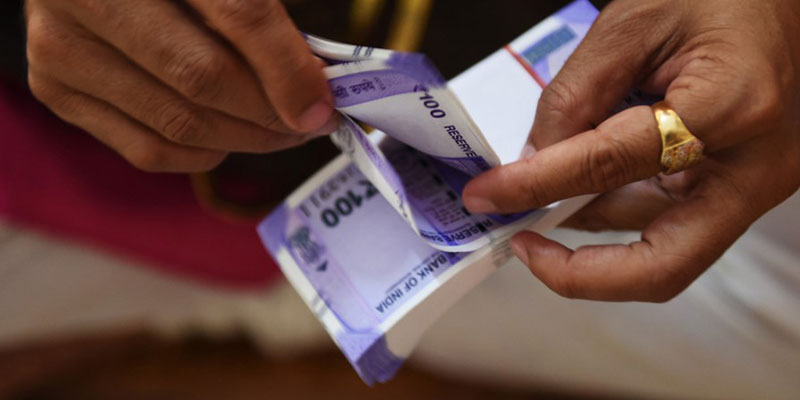- India
- Apr 09
- Sreesha V.M
Centre notifies amalgamation of 26 Regional Rural Banks
‘One State, One RRB’ policy will become a reality from May 1 as the Finance Ministry has issued notification for amalgamation of 26 Regional Rural Banks across 11 states/UT to achieve better operational efficiency and cost rationalisation.
Regional Rural Banks (RRBs)
• The RRBs were established under the provisions of the ordinance promulgated on September 26, 1975 and Regional Rural Banks Act, 1976.
• RRBs were established in 1975 on the recommendation of the Narasimham Working Group with the particular objective of catering to the financial inclusion needs of the small and marginal farmers, agricultural labourers, artisans and weaker sections of the society.
• The first five Regional Rural Banks were established on October 2, 1975 with the objective to create an alternative channel to cooperative credit structure with a view to ensure sufficient institutional credit for rural and agriculture sector.
• The first RRB was Prathama Bank, with head office in Moradabad, Uttar Pradesh. It was sponsored by Syndicate Bank and had an authorised capital of Rs 5 crore.
• The RRBs, with focus on serving the rural areas, are an integral segment of the Indian banking system.
• Sponsored by the Commercial Banks, the equity of RRBs are held by the central government, concerned state government and the sponsor bank in the proportion of 50:15:35.
• These banks are envisaged to be state-sponsored, regionally based and rural-oriented.
• The purpose of establishment of the RRBs is to develop the rural economy by providing credit and other facilities to the small and marginal farmers, agricultural labourers, artisans and small entrepreneurs.
• Currently, 43 RRBs are operating through a network of 22,069 branches in 26 states and two Union Territories covering 700 districts of the country.
Role of RRBs
• Nearly 70 per cent of the total Indian population reside in rural areas, laying a larger impact on the economic situation of the country. Consequently, there is a need for a robust and efficient banking system in rural areas, offering customised products and timely credit at affordable rates, unlike traditional moneylenders providing loans at very high interest rates.
• RRBs play a vital role in the growth and development of rural and backward areas in a developing country like India.
• RRBs have a mandate to ensure rural development and foster financial inclusion.
• RRBs cater to a more scattered population that demand smaller ticket loans, and these banks operate under strict operational and lending norms.
Contributions made by RRBs:
i) Of the total loans extended by the RRBs, about 46 per cent goes to agriculture. About 90 per cent of loans are extended to the priority sector. Of the total loans, about 79 per cent is extended to weaker sections.
ii) RRBs play a significant role in extending micro credit. They account for 30 per cent of the Self-Help Group accounts and 26 per cent of the loan amount. About 19 per cent of total Kisan Credit Cards have been issued by the RRBs.
iii) Share of RRBs in total accounts/enrolments under government sponsored schemes like Pradhan Mantri Jan-Dhan Yojana (PMJDY), Pradhan Mantri Jeevan Jyoti Bima Yojana (PMJJBY), Pradhan Mantri Suraksha Bima Yojana (PMSBY), Atal Pension Yojana, etc varies from 12 per cent to 19 per cent.
iv) About 92 per cent of the branches of RRBs are in rural and semi-urban areas. Though RRBs have 14 per cent of total bank branches in the country, their share in total number of rural branches is about 29 per cent. In the rural areas of aspirational districts, RRBs have about 40 per cent of the rural branches. Moreover, many RRBs have branches in remote areas and they are providing financial services to vulnerable sections.
v) In rural areas, the share of deposit accounts of RRBs is about 26 per cent and RRBs have the highest average balance in PMJDY accounts amongst all categories of banks. In the northeast region, RRBs cater to the banking needs of about 38 per cent of the rural people. As against the overall rural credit-deposit ratio of 64 per cent for all the banks, RRBs have a rural credit-deposit ratio of 75 per cent.
Amalgamation of RRBs
• In line with the powers granted under Section 23A(1) of the Regional Rural Banks Act, 1976, these RRBs will merge into a single entity in the public interest and in the interest of the development of the area served by these entities and also in the interest of the Regional Rural Banks themselves.
• After consultation with stakeholders, an amalgamation of 26 RRBs in 10 states and 1 UT has been carried out with a primary focus on improvement in scale efficiency and cost rationalisation.
• RRBs in 11 states — Andhra Pradesh, Uttar Pradesh, West Bengal, Bihar, Gujarat, Jammu & Kashmir, Karnataka, Madhya Pradesh, Maharashtra, Odisha and Rajasthan — are to be merged into one entity, respectively, for each of these to realise the goal of ‘One State, One RRB’.
• The effective date for amalgamation has been fixed to May 1, as per the gazette notification.
• At present, 43 RRBs are functioning in the country. Post amalgamation, there will be 28 RRBs with over 22,000 branches covering 700 districts.
• Their predominant area of operation is in rural areas, with approx 92 per cent of branches in rural/semi-urban areas.
• This is the fourth phase of amalgamation. In Phase 1 (FY 2006 to FY 2010) the number of RRBs was reduced from 196 to 82, it was further brought down from 82 to 56 in Phase 2 (FY 2013 - FY 2015) and in Phase 3, it was cut from 56 to 43.
(The author is a trainer for Civil Services aspirants.)

